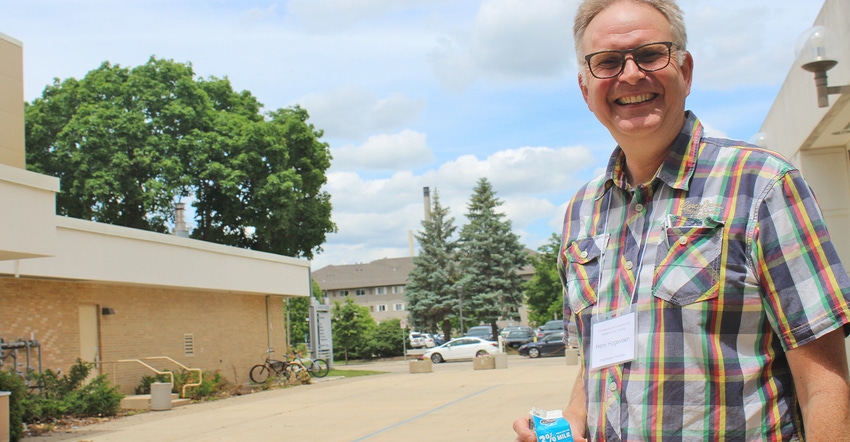
Precision dairy farming has applications for all herd sizes.
At Dairy Ridge Dairy in Long Prairie, Minn., Smartbow monitoring technology is used primarily for heat detection in the 1,200-cow herd, according to Diane Gertken, dairy office manager. Cows are fitted with special ear tags that detect animal activity in real time. Individual cow information is collected and quickly transmitted. Alerts appear on tablets that herdsmen use in the barn when breeding cows in heat. Rumination alerts and milk deviation reports also let herdsmen know which cows may be in distress and need visual examination. The real-time localization increases efficiency, allowing herdsmen to quickly locate cows.
At Ron van Burgsteden’s 70-cow dairy in Leusden, the Netherlands, his cows are milked by a Lely robot. He starts and ends his day by reviewing the herd data on his desktop computer. His cellphone is like a hired hand, visible in the photos he shares of his days on the farm. He uses smartphone apps to help him make the best silage, apply the right amount of fertilizer and breed a healthy herd.

REAL TIME INFO: At Dairy Ridge Dairy in Long Prairie, Minn., farm office manager Diane Gertken says they use Smartbow monitoring technology to manage their 1,200-cow herd. REAL TIME INFO: At Dairy Ridge Dairy in Long Prairie, Minn., farm office manager Diane Gertken says they use Smartbow monitoring technology to manage their 1,200-cow herd.

Sensor technology has been around since the 1970s according to Henk Hogeveen, an animal health management professor at Wageningen University in the Netherlands. Milk meters, an early form of precision dairy farming, have been around since the 1980s and are now standard.
What breakthrough technologies of today will be the conventional technologies 40 years into the future? That’s what attendees at the 2nd International Precision Dairy Farming Conference, held in June in Rochester, Minn., discussed in June. The event brought together 206 people from 21 countries.
The challenge is to sit down together and see what the technology can be used for, Hogeveen says. Both dairy farmers and researchers need to listen to one another because in some ways they speak a different language. While farmers are focused on the business side working on ways to increase milk production and reduce labor costs, consumers are asking if they are providing around-the-clock cow care.
Sensors provide that around-the-clock observation according to David Kelton, a veterinarian and professor at Ontario Veterinary College, University of Guelph in Guelph, Ontario, Canada. Sensors can detect if a cow is standing or lying, count her steps and measure somatic cells in milk. There are systems that claim to be able to detect mastitis, lameness, ketosis and other common dairy cattle diseases, Kelton says.

AUTO-MILK: At Ron van Burgsteden’s 70-cow dairy in the Netherlands, his cows are milked by a Lely robot.

One of the challenges with the technology is education, he adds.
“Far too often these systems are bought, installed and farmers are left to their own devices regarding how to best use the data that are generated,” Kelton says. “There are too few ‘experts’ available to provide support, and in general the training for farm advisers is lacking.”
And with all the data generated comes the question of who owns the data.
In the Netherlands, van Burgsteden is chairman of the farmers’ advisory board of JoinData, a non-profit cooperative for agricultural entrepreneurs that strives for a “secure and transparent data platform for the Dutch agricultural sector.” Farmers own their raw data and decide who can use the data.
Likewise, Gertken says the dairy farmer owns the data generated through Smartbow.
What are these two looking for in the future of precision dairy?
Gertken sees value in using the data to be proactive; van Burgsteden dreams of apps that save him money, make him money, prevent annoying events, reduce his workload and help him make better decisions.
Kubat Willette is a digital content creator for Farm Progress.
About the Author(s)
You May Also Like




